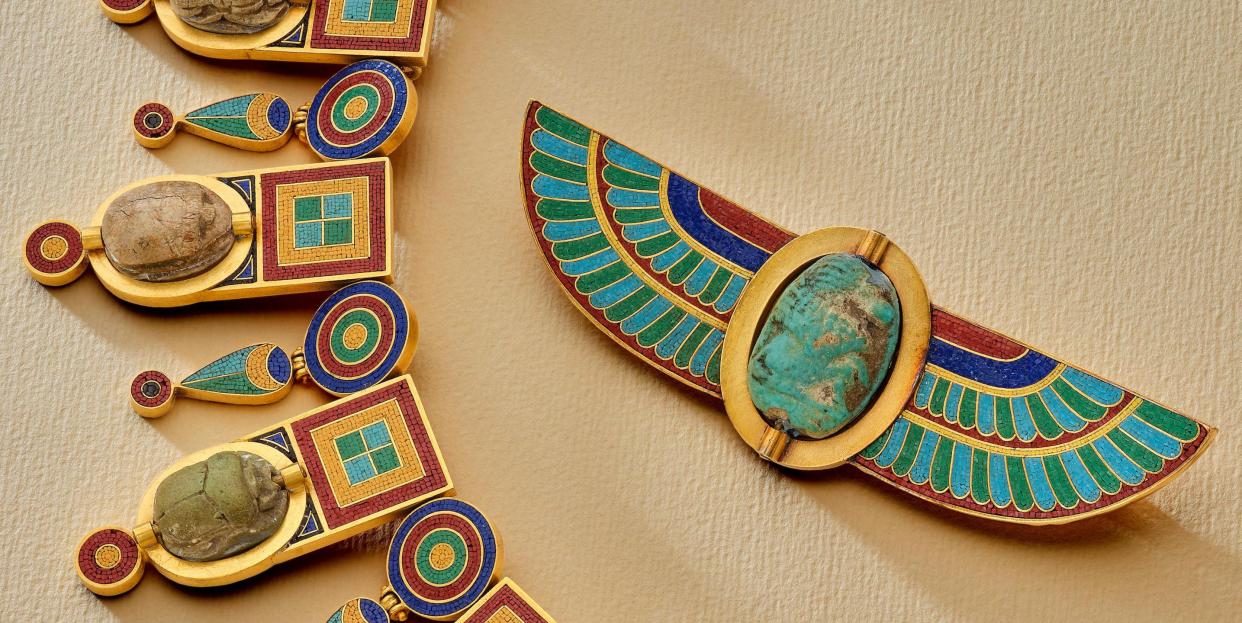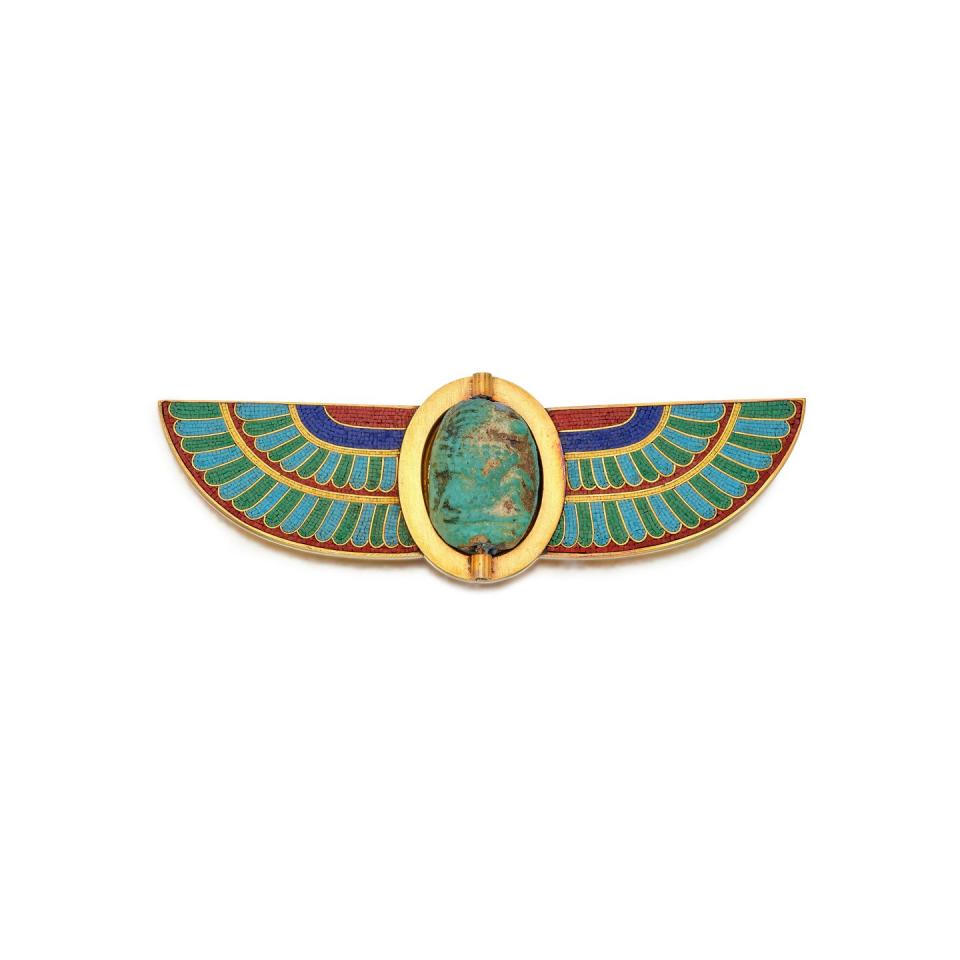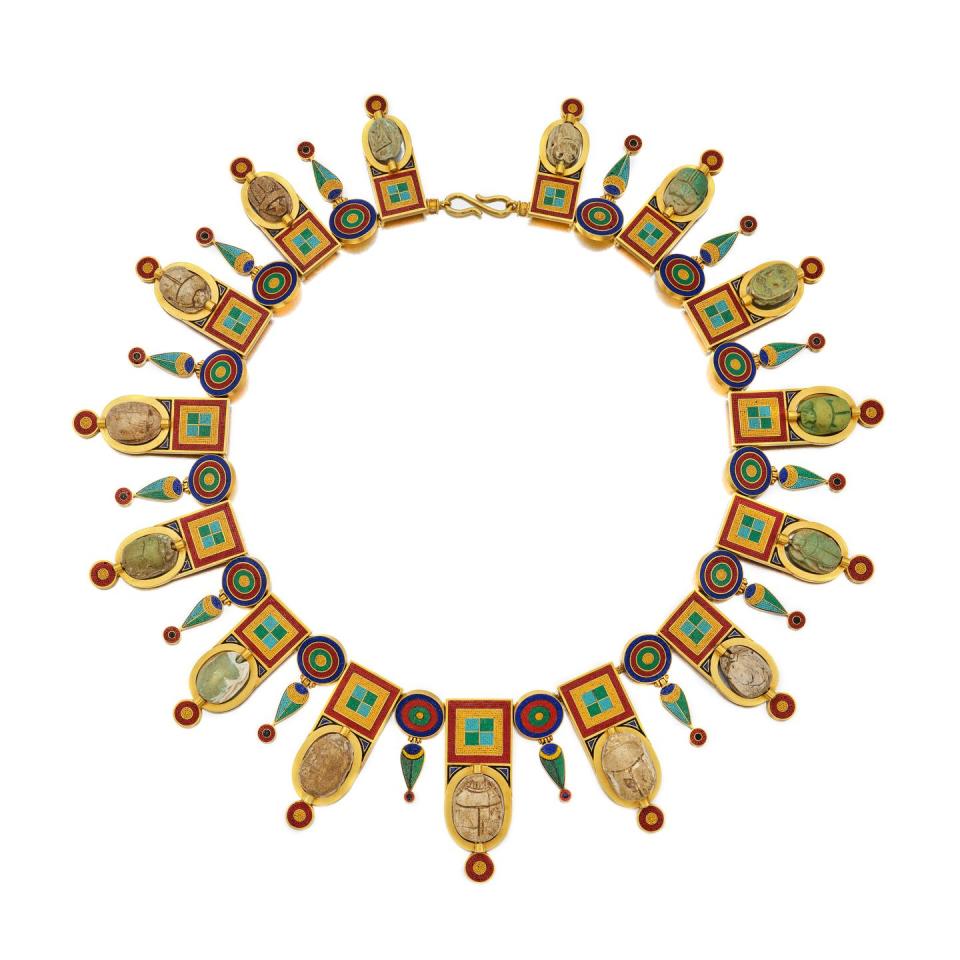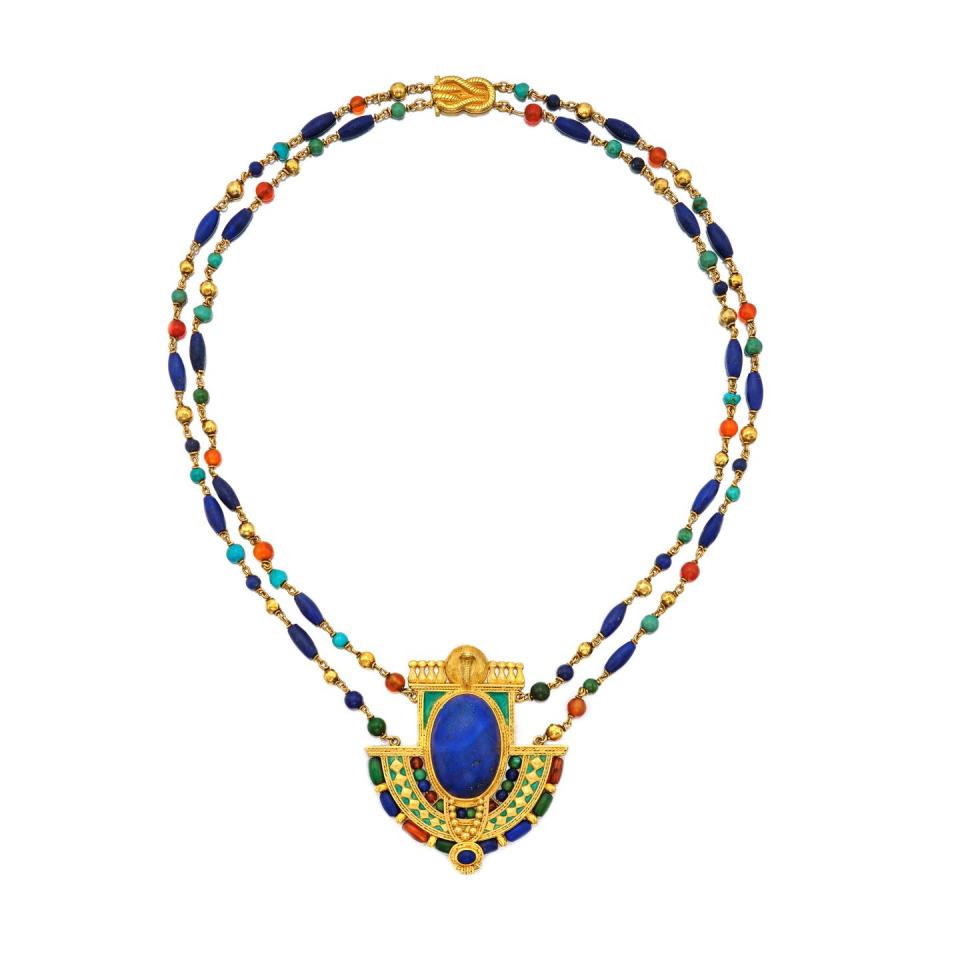Rare Egyptian Revival Jewels on Sale This December

“As my eyes grew accustomed to the light, details of the room within emerged slowly from the mist, strange animals, statues, and gold— everywhere the glint of gold. For the moment—an eternity it must have seemed to the others standing by—I was struck dumb with amazement, and when Lord Carnarvon, unable to stand the suspense any longer, inquired anxiously, 'Can you see anything?' it was all I could do to get out the words, 'Yes, wonderful things.”
“Everywhere the glint of gold.” It is what Howard Carter’s eyes saw when he first discovered the tomb of Tutankhamun in 1922, a moment which remains one of the most exciting archaeological discoveries in history. It also makes a turning point in jewelry design. Carter’s findings directly inspired the Art Deco Egyptian Revival, a period of bold and singular designs fusing the geometric Art Deco lines and diamond and onyx palette, with Egyptian iconography like scarabs and phoenixes and with stones like turquoise and lapis and carnelian. Pieces from the period from houses like Van Cleef & Arpels, Cartier, and Boucheron, remain some of the most collectible in the market.

But jewelry people will point out, that was not the first Egyptian revival, and will likely not be the last. This December, an exhibit and auction at Sothebys offers a brilliant-and glittering-reminder of when, how, and why “Egyptomania” has captured our imaginations. Pieces from an earlier 19th century Egyptian Revival-fueled by Napoleon’s campaigns, studies of the Rosetta Stone, an exhibit at the Louvre of Auguste Mariette’s studies and excavations, and then the opening of the Suez Canal in 1869-will be on display in New York from November 30th and then, on sale, during Sothebys Magnificent Jewels Sale on December 7th.

Included will be one-of-a-kind examples from the personal collection of the 19th century jewelry master Castellani, whose Egyptian inspired necklaces and brooches are more often found in museums than auctions. And a beautiful example of Louis Comfort Tiffany daring eye, a lapis, turquoise and carnelian necklace inspired by a personal trip to Egypt in 1908. This curated selection of rare Egyptian inspired jewels presents a chance for a wider public to understand the way history, archaeology, and travel have influenced jewelry design, and a rare opportunity to own a piece of it.

You Might Also Like

